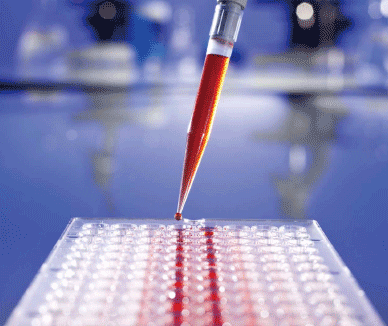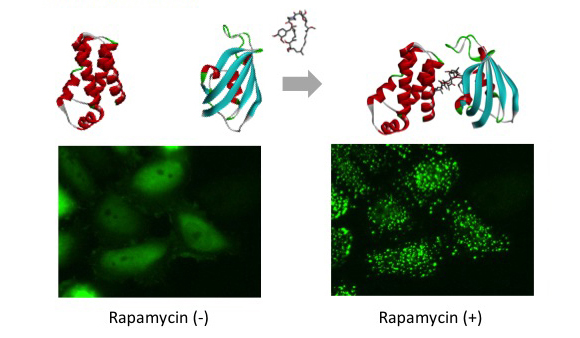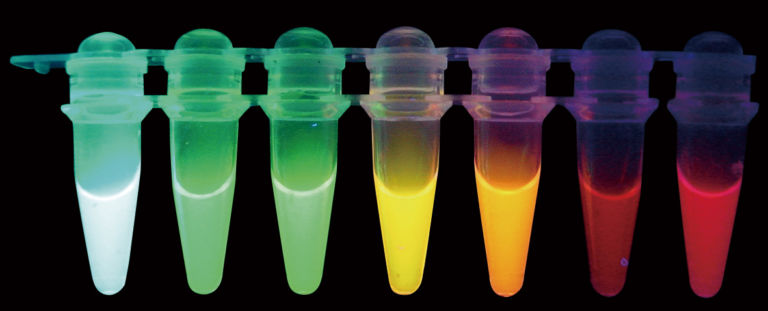Drug Discovery
 MBL International Corporation offers comprehensive solutions for drug discovery including ELISA Kits, Protein-Protein Interaction and Fluorescent Proteins.
MBL International Corporation offers comprehensive solutions for drug discovery including ELISA Kits, Protein-Protein Interaction and Fluorescent Proteins.
CycLex® series has a large variety of in vitro enzyme assay kits focused on research of novel genes related to drug discovery. Its target fields are protein kinase, phosphatase, acetylation/deacetylation, and protein modification. CircuLex™ series has ELISA kits which measure various disease marker candidates focused on metabolism and inflammation, such as PCSK9, S100 protein family, and so on. These Assay/ELISA kits are suitable for in vitro drug screening or target validation.
Cells consist of various elements such as nucleic acid, proteins and substructures. Moreover, functions are dynamically regulated by multiple signal transduction. Purified protein can provide some observation in drug discovery but the biological relevance of this information is not always clear.
 In order to overcome this challenge, MBL International Corporation offers fluorescent protein-based drug discovery tools in living cells. Our novel technology, Fluoppi, can visualize Protein-Protein Interaction (PPI) of interest of living cells. Moreover, other product offerings such as Keima-Red and FUCCI, can visualize autophagy/mitophagy and cell cycle respectively. These technologies are applicable for cell-based drug screeing.
In order to overcome this challenge, MBL International Corporation offers fluorescent protein-based drug discovery tools in living cells. Our novel technology, Fluoppi, can visualize Protein-Protein Interaction (PPI) of interest of living cells. Moreover, other product offerings such as Keima-Red and FUCCI, can visualize autophagy/mitophagy and cell cycle respectively. These technologies are applicable for cell-based drug screeing.
CycLex Series
CycLex® brand products are 96 well plate based in vitro enzyme assay kits focused on research of novel genes related to drug discovery. Its main target field is protein kinase, protein phosphatase, acetylation/deacetylation, and protein modification.

Learn more about CycLex products
Deacetylase
Histone deacetylase (HDAC) is considered to play a crucial role in regulating gene expression by changing nucleosome structure.
Tyrosine Kinase
Tyrosine kinases are divided into two main families: the receptor tyrosine kinase (RTK) and cytoplasmic protein (Non-receptor tyrosine kinase).
Tyrosine Phosphatase
CycLex Protein Phosphatase Cdc25A, B, and C Fluorometric Assay Kit is a fluorometric and non-radioactive assay designed to measure the activity of Cdc25A, B, and C protein phosphatase.
Cellular Acetylation
Acetylation and deacetylation of nucleosomal histones play an important role in the modulation of chromatin structure and chromatin function as well as the regulation of gene expression.
Serine/Threonine Kinase
CycLex AMPK Kinase Assay Kit is designed to measure the activities of purified AMP-activated protein kinase (AMPK) or recombinant AMPK.
NAD+ Biosynthesis
CycLex NAMPT Colorimetric Assay Kit detects nicotinamide phosphoribosyltransferase (NAMPT) activity in recombinant NAMPT or endogenous NAMPT immunoprecipitated from cell extract.
CircuLex series
CircuLex™ brand products are focused on assay kits for detecting disease-related markers. For example, lipid metabolism, adipocytokine/inflammation, S100 family proteins, and so on.

Learn more about CircuLex products
PCSK9
PCSK9 is a 692-residue extracellular protein expressed primarily in the kidneys, liver and intestine representing the 9th member of the secretory subtilase family. The secreted form of PCSK9 binds directly to the LDLR and results in degradation of the receptor.
Chitinase
Chitin is a β1–> 4-bonded biopolymer of N-acyl-D-glucosamine, and is the main component of exoskeletons and cell walls of various organisms including arthropods, nematodes, and fungi. However, it has not been found in vertebrates.
Glycated Proteins/AGEs
Reducing sugars react with protein amino groups to form a diverse group of protein-bound moieties with fluorescent and cross-linking properties.
S100 Protein Family
S100 protein family of calcium binding proteins with 2 distinct helix-loop-helix motifs (EF-hands) shows cell typespecific expression and consists of 20 members.
Adipokine/Lipid Metabolism
A reduction in adiponectin serum levels is accompanied by insulin resistance states, such as obesity and type 2 diabetes mellitus.
Inflammation
Thioredoxin-interacting protein (TXNIP), the endogenous inhibitor of thioredoxin also known as vitamin D3 up-regulated protein-1 or thioredoxin-binding protein-2, inhibits thioredoxin antioxidative function by binding to its active-site thiols.
Other Markers
Lactoferrin is an iron-binding glycoprotein of the transferrin family that is expressed in most biologic fluids, such as the breast milk, particularly the colostrums, tears, sweat, saliva and other exocrine secretions of mammals.
Fluorescent Proteins
CoralHue® fluorescent proteins have been isolated from stony coral and emit a brilliant and stable fluorescence. MBLI highly recommends these exceptional fluorescent proteins for optical marking, labeling of subcellular structures, and protein migration.
MBLI is now offering fluorescent protein-based indicators such as Fluoppi for protein-protein interaction, FUCCI for cell cycle and Keima-Red for autophagy/mitophagy.

Learn more about Fluorescent proteins
CORALHUE® FLUORESCENT PROTEINS
CoralHue® fluorescent proteins have been isolated from stony coral and emit a brilliant and stable fluorescence.
FLUOPPI
Protein-Protein Interaction Detection in Living Cells using Fluoppi
FUCCI
Fluorescent Ubiquitination-based Cell Cycle Indicator (FUCCI)
KEIMA-RED
Keima-Red Fluorescent Protein Vector for Mitophagy Monitoring
KUSABIRA ORANGE
Keima-Red Fluorescent Protein Vector for Mitophagy Monitoring